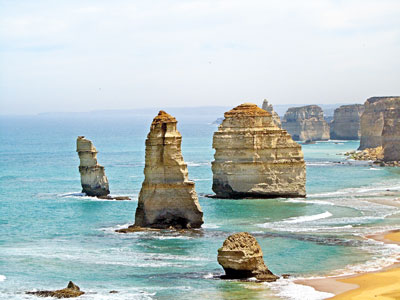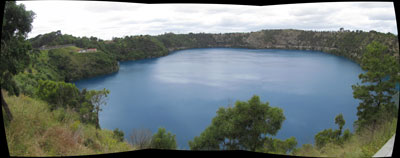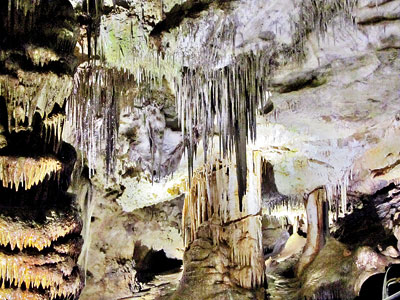On the picturesque road to Adelaide

The Twelve Apostles- limestone rock formations off the coast
It is one of Australia’s great tourist attractions.
The Great Ocean Road starts about one and a half hour’s drive from the centre of Melbourne at the coastal city of Torquay and heads westwards for about 400 kilometres along the wild and windswept southern coast of the state of Victoria to the town of Nelson at the border with the state of South Australia.
Visiting Adelaide a couple of months ago we decided instead of taking the standard 80- minute flight from Melbourne to do a road trip instead – which would give us the opportunity to spread our travel over a few days, stay overnight in quaint coastal towns and take in the scenery, as we drove our way westward, of this diverse and dramatic region.
The Great Ocean Road is dedicated as a memorial to the Australians who lost their lives fighting in the First World War, because it was built by the servicemen who came back home when the war ended. Aware of the problems resulting from an influx of so many soldiers returning from the war who would have to be found employment, the chairman of the Country Roads Board, William Calder, proposed to the State War Council that funds be provided for re-employing these returned servicemen to build roads in sparsely populated areas.
The coastal communities of Victoria which are now linked up by this Great Ocean Road were at that time isolated, several of them depending on supply by sea. Reaching them by road from Melbourne involved an arduous trip through dense forest along a rough coach track.
Howard Hitchcock, the mayor of Geelong (the big city just before the road begins at Torquay on the coast) was instrumental in bringing the plans to fruition, forming the Great Ocean Road Trust and raising funds to finance the project. He envisaged the road would be a powerful tourist attraction, claiming that its ocean, mountain, river and fern tree scenery would be better than those of the French Riviera and America’s Pacific Coast Highway.He also saw the project as creating a lasting monument to those who had died in the war – it would be built by soldiers in memory of their comrades who did not return from the War.
Our journey from Melbourne took us past the fearsome Shipwreck Coast, home to the craggy limestone formations called the Twelve Apostles that rise majestically out of the sea. If truth be told, there are currently only eight limestone rock formations standing in the sea– but the touristy name ‘Twelve Apostles’ has stuck and we encountered hordes of camera-happy tourists stopping to view the surviving apostles!
We stayed overnight in charming fishing villages like Port Fairy(harbouring nineteenth century fishermen’s cottages and an old bluestone churches with stained glass windows) and once across the border in South Australia in the little village of Robe with its beautifully uncrowded Long Beach where we had a peaceful picnic lunch far from the maddening crowd.

Mount Gambier’s stunning Blue Lake
Our road trip allowed us to divert inland to the spectacular cave in the town of Tantanoola with its stunning stalactites and stalagmites – and the large town of Mount Gambier, set in a picturesque volcanic landscape with its Cave Garden, Sunken Gardens and beautiful Blue Lake (whose colour changes with the seasons from a slate grey in winter to a magnificent blue in summer).
The Sunken Garden, also known as the Umpherston Sinkhole, was once a typical limestone cave created by seawater waves eroding the limestone rock. The sinkhole was naturally created when the chamber’s roof collapsed – and in 1886 James Umpherston, who owned the land, created a beautiful flower garden within the sunken chamber. In the very heart of the city the Cave Garden is a similar garden situated inside a similar sinkhole, with several viewing platforms from which one can admire the beautiful manicured roses.
So if ever you get the opportunity to visit Australia don’t take the easy option of taking domestic air flights to visit the big cities.
Fly into Melbourne, hire a car (Australians drive on the same side of the road as we do) and take the picturesque road route to Adelaide.
The scenic journey and the sights you will encounter are well worth the extra time you spend!

Umpherstone Sunken Garden – from above

Stalactites and stalagmites in Tantanoola cave


